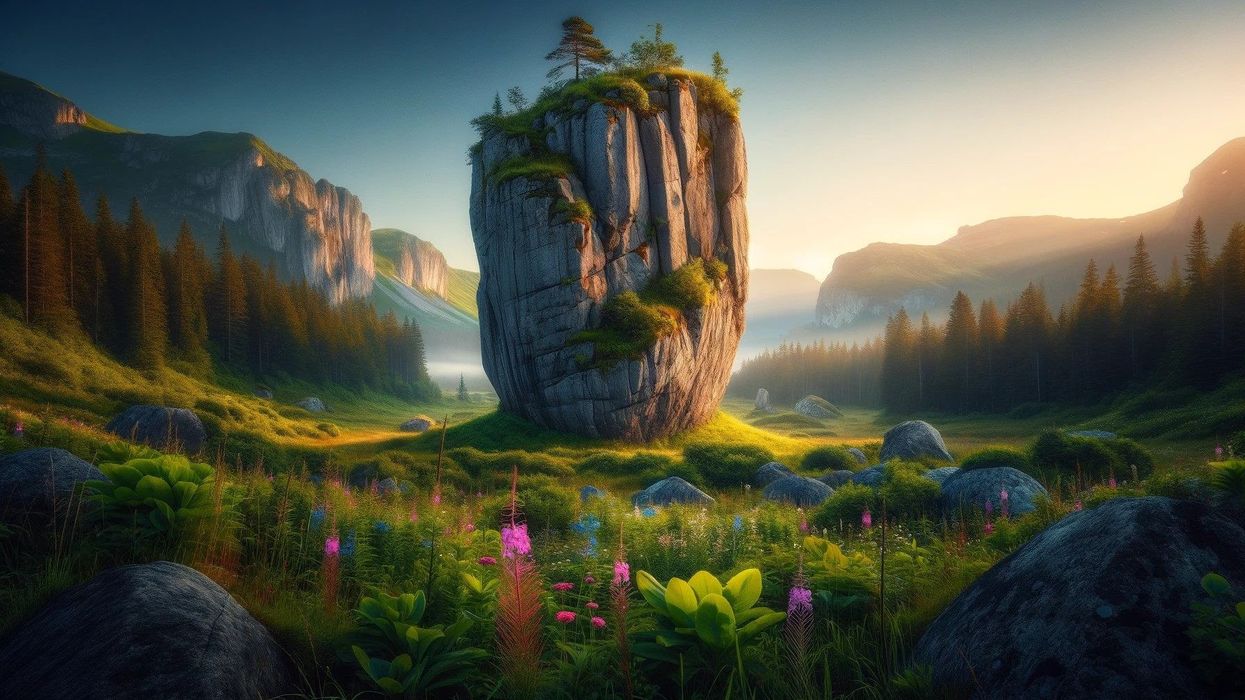25 Facts About Rocks That You Might Not Have Known Before
Imagine you're holding a piece of Earth's history that has journeyed across the vastness of time; this is the true magic of rocks. Present in every corner of the planet, these natural artifacts lie beneath your feet, construct majestic mountain ranges, and decorate the Earth's landscapes.
Rocks are categorized into three distinct types: sedimentary, igneous, and metamorphic, each narrating a different chapter of Earth's epic tale.
Sedimentary rocks, for instance, tell stories of ancient rivers and lakes, their layers reading like pages filled with fossilized remains and mineral grains. Igneous rocks, born from the fierce heat beneath Earth's surface, bear witness to the planet's fiery core and volcanic activity.
Metamorphic rocks, products of immense pressure and heat, transform over eons, their new patterns and minerals mapping out a history of change.
These geological gems are more than just stone; they are dynamic players in the rock cycle, a planet-wide system of renewal and transformation. From deep within the Earth's crust where molten rock stews, to the peaks of the tallest mountains where the weather shapes them, rocks undergo an extraordinary metamorphosis.
This article delves into the lesser-known facts about these silent storytellers, enhancing your understanding of the rocks that build, shape, and reveal the backbone of the human world.
Types Of Rocks: Igneous, Sedimentary, And Metamorphic
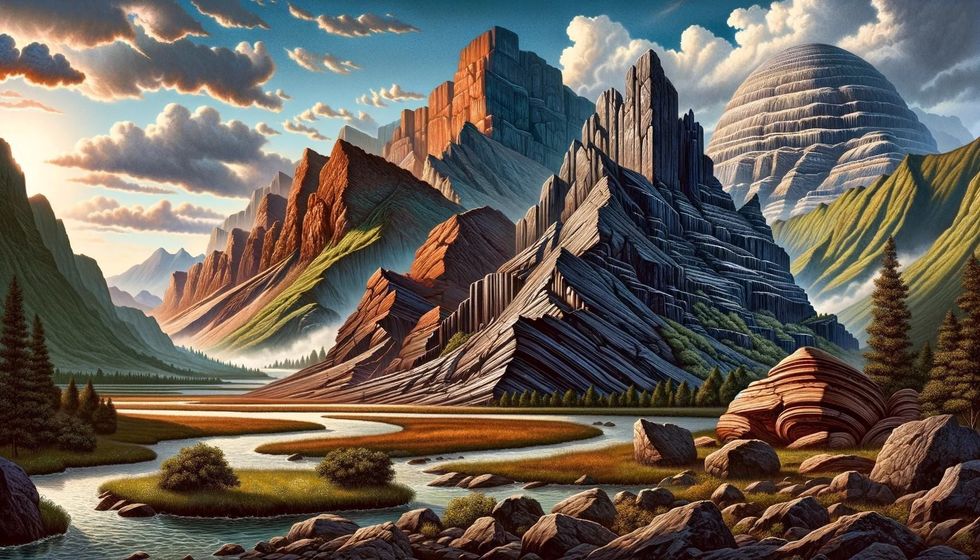
Each rock type reveals a unique origin story and a fascinating process that transforms basic elements into intricate and visually striking formations. It’s this process that crafts the diverse textures and structures found in the rock layers, from the deep ocean floors to the highest mountain peaks.
Whether crystallized from molten magma, compacted through eons, or transformed by intense pressure and heat, these rocks document the planet's vibrant and evolving story.
- Igneous rocks form when magma cools and solidifies, either within the Earth (intrusive igneous rocks) or on its surface (extrusive igneous rocks).
- Volcanic rock is a type of extrusive igneous rock formed from lava that erupts onto the surface and cools rapidly.
- Sedimentary rocks form from deposited materials that originate from preexisting rocks, organic matter, or mineral crystals from water.
- Deposited materials accumulate in layers and compact over time, often at the bottom of oceans and lakes, to form sedimentary rocks.
- Metamorphic rocks are born from existing igneous and metamorphic rocks that undergo intense heat and pressure, altering their mineralogical composition.
- Metamorphic rocks can be identified by their distinct foliation or banding, characteristics that reflect their transformative history.
The Rock Cycle: Earth's Geological Recycling System
The rock cycle is a journey that transforms rocks from one type into another, serving as Earth's organic recycling mechanism. This cyclical process involves an ongoing series of events that lead to the creation, breakdown, and reconstruction of rocks.
It highlights the dynamic and ever-changing nature of the planet's geology, as rocks shift from one state to another throughout geological time.
- The rock cycle shows how rocks form, break down, and are reshaped into igneous, sedimentary and metamorphic rocks.
- This cycle is not linear; a rock can progress from magma to sediment and then undergo metamorphism, or any other sequence.
- The steps that form sedimentary rocks, for instance, can include weathering, erosion, deposition, compaction, and cementation.
- When subduction occurs, sedimentary and metamorphic rocks melt into magma, continuing the cycle as potential igneous rocks once more.
- The rock cycle plays a crucial role in shaping Earth's crust and landscapes. It not only contributes to the formation of soil, which is essential for plant life, but also recycles minerals and materials, making them available for new rock formation.
Rocks And Minerals: Building Blocks Of Earth's Crust
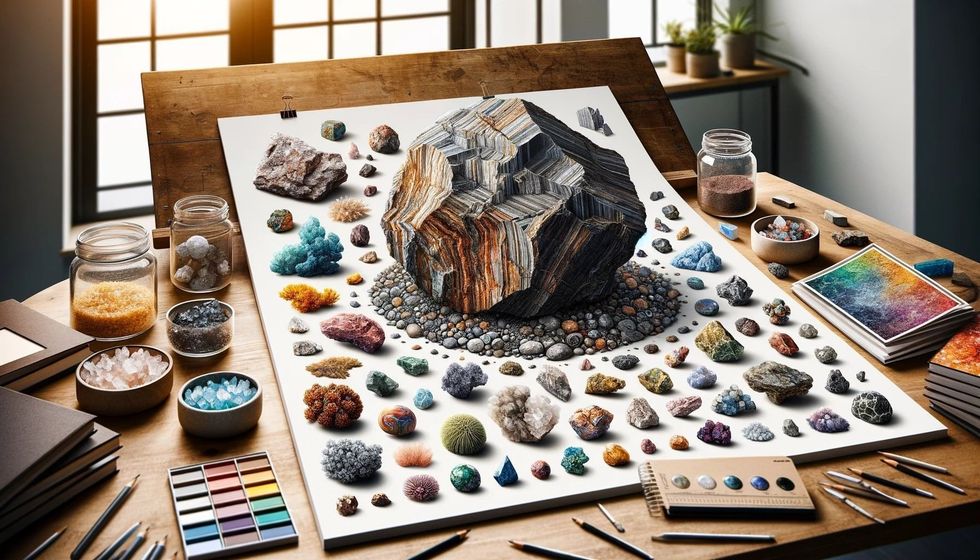
Rocks are composed of various combinations of minerals, with each mineral contributing to the foundation and structure of the planet. The rich diversity of these minerals within rocks is what gives rise to an extensive range of textures, colors, and forms, painting a vivid mosaic of Earth's geology.
It is this mineral composition that not only defines a rock’s unique beauty but also its properties and uses in the natural world and human applications.
- Most rocks are composed of minerals like quartz, feldspar, or calcite, each contributing to the complexity of the rock's character.
- As magma cools, various minerals crystallize at different temperatures, resulting in the varied textures of igneous rocks.
- Minerals in rocks are a source of metals and other materials used in construction, technology, and industry.
- The study of rocks and minerals helps scientists understand Earth's history, climate changes, and tectonic activities.
- Some minerals are capable of glowing under certain conditions, a phenomenon known as fluorescence. For instance, the mineral fluorite can emit a vivid glow when exposed to ultraviolet light, displaying brilliant blues, greens, and other colors.
Space Rocks: Visitors From Beyond Earth
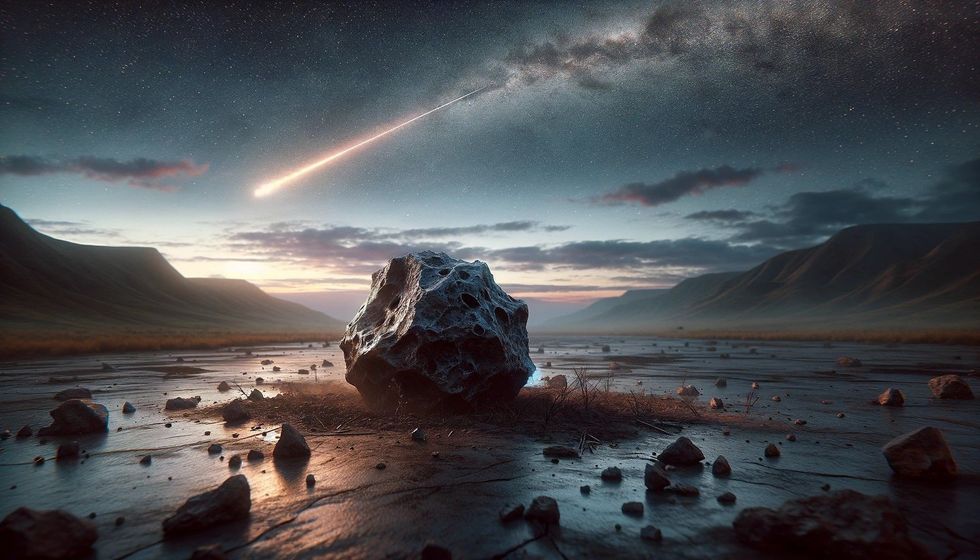
Not every rock is a native of Earth's surface or crust. Some, known as space rocks or meteorites, have voyaged from different corners of the solar system and, when they collide with Earth, they bring with them the tales of distant cosmic events.
These extraterrestrial visitors not only contribute to Earth's geological diversity but also offer invaluable insights into the materials and phenomena of the wider universe.
- When a meteoroid enters the Earth's atmosphere and vaporizes, it becomes a meteor or 'shooting star', and if it survives to reach the Earth's surface, it is termed a meteorite.
- Meteorites can be stony, metallic, or stony-iron in nature, each type providing clues to their origin and journey through space.
- Asteroids are rocky objects larger than meteoroids, mostly found in the asteroid belt between Mars and Jupiter, while comets are icy bodies that release gas or dust.
- Some of the most famous meteorites have stories that underscore their scientific importance and cultural impact. For example, the Chelyabinsk meteor, which exploded in the atmosphere over Russia in 2013, demonstrated the potential hazard space rocks can pose to Earth.
- The Allende meteorite, which fell in Mexico in 1969, is known for containing pre-solar grains, minerals older than the solar system itself, providing invaluable information on the cosmos's evolution.
Interesting Records And Fun Facts About Rocks
Rocks possess an allure and diversity that can rival the intrigue of living organisms, each with its unique geological story and features that distinguish it in the natural world. Their captivating qualities extend from visual spectacle to scientific value, as they harbor records of Earth's past environments and events, often holding the keys to untold secrets beneath their surfaces.
- The oldest known rocks on Earth are found in the Acasta Gneiss Complex in Northwestern Canada. These rocks are estimated to be about four billion years old.
- Mount Augustus, located in Western Australia, is often cited as the world's largest rock. Surpassing even Uluru (Ayers Rock), Mount Augustus is about 2.5 times larger.
- The Racetrack Playa in Death Valley National Park, California, is famous for its moving rocks. These rocks, some weighing several hundred pounds, leave long tracks behind them as they mysteriously slide across the dry lake bed.
- A balancing rock, also known as a perched rock, is a natural geological formation featuring a large rock balanced on a smaller base, often defying gravity.
FAQs
Why are rocks important?
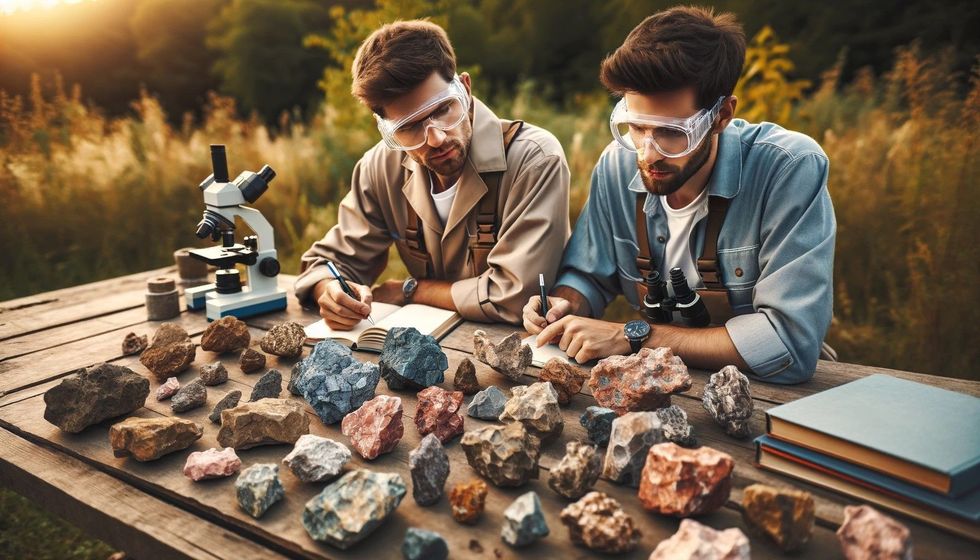
Rocks are incredibly important because they form the Earth's solid foundation. Not only do they make up the majority of the planet's crust, but they also help to determine the shape of the landscape, influence climate, and provide habitats for organisms. Additionally, rocks are a critical resource for humans, used for everything from construction to the minerals they contain.
Can rocks change from one type to another?
Yes, rocks can change from one type to another. This is part of the rock cycle. For example, sedimentary rocks can be pushed deep into the Earth by the movement of tectonic plates, where heat and pressure transform them into metamorphic rocks. Metamorphic rocks can then melt, become magma, and eventually cool and solidify into igneous rocks.
Where can I find each type of rock?
You can find sedimentary rocks often in places like riverbeds and ancient sea floors. Igneous rocks are commonly found in volcanic regions or where volcanic activity once occurred. Metamorphic rocks tend to be located in mountain ranges or the roots of mountains where tectonic plate movement has created pressure and heat.
Why are sedimentary rocks often layered?
Sedimentary rocks are often layered due to the process of deposition. Materials like sand, silt, and clay, along with organic matter, settle in water or on land over time. These layers accumulate in a sequence, with newer layers pressing down on older ones, leading to compaction and cementation, which preserves the layered structure.
How can metamorphic rocks be identified in the field?
Metamorphic rocks can be identified by their distinct foliation or banding, which are features resulting from the alignment of minerals under high pressure and temperature conditions. These textures differ from the granular texture of igneous rocks and the layered structure of sedimentary rocks, providing clues about their metamorphic origins.
What determines the texture of igneous rocks?
The texture of igneous rocks is determined primarily by the cooling rate of magma or lava from which the rock forms. Rapid cooling, typically seen in extrusive igneous rocks, results in fine-grained or glassy textures because crystals have less time to grow. Slow cooling, associated with intrusive igneous rocks, allows larger crystals to form, resulting in a coarse-grained texture.
How does the rock cycle contribute to soil formation?
The rock cycle contributes to soil formation through the weathering of rocks. Physical and chemical weathering breaks down rocks into smaller particles that, combined with organic matter, form soil. This process is essential for creating the fertile ground necessary for plant life and agriculture.
What is the significance of studying space rocks, like meteorites?
Studying space rocks, such as meteorites, is significant because they carry unique information about the early solar system, the formation of planets, and the prevalence of organic compounds in space. Analyzing meteorites helps scientists understand the conditions under which the solar system was formed and provides clues about the potential for life on other planets.
How do balancing rocks form?
Balancing rocks, or perched rocks, form through a combination of geological processes, including erosion and weathering. These formations occur when softer rock layers beneath a harder rock erode away over time, leaving the harder rock precariously balanced on a smaller base. Balancing rocks are fascinating natural sculptures that illustrate the power of natural forces shaping the landscape.
What role do minerals play in the color of rocks?
Minerals significantly influence the color of rocks; the presence of different minerals can impart a wide range of colors. For example, iron-rich minerals can give rocks a reddish hue, while the presence of chlorite or serpentine results in greenish shades. The specific combination and concentration of minerals within a rock determine its overall coloration.
Whether it's the igneous rock beneath your feet, the sedimentary rock that lines riverbeds, or the metamorphic rock displaying striations of its tumultuous past, rocks tell the story of planet Earth.
Learning about rocks enhances human appreciation of Earth's geological history and the processes that continue to shape its surface and crust. From molten material to solid rock, every stone has a tale, a glimpse into the grand narrative of Earth's formation and evolution.
So, take a moment to pick up a rock and ponder the world beneath and beyond, there's bound to be a fascinating fact waiting to be discovered.
We Want Your Photos!
More for You
See All
Bachelor of Arts and Law specializing in Political Science and Intellectual Property Rights

Anusuya MukherjeeBachelor of Arts and Law specializing in Political Science and Intellectual Property Rights
With a wealth of international experience spanning Europe, Africa, North America, and the Middle East, Anusuya brings a unique perspective to her work as a Content Assistant and Content Updating Coordinator. She holds a law degree from India and has practiced law in India and Kuwait. Anusuya is a fan of rap music and enjoys a good cup of coffee in her free time. Currently, she is working on her novel, "Mr. Ivory Merchant".
Bachelor of Science specializing in Human Anatomy

Joan AgieBachelor of Science specializing in Human Anatomy
With 3+ years of research and content writing experience across several niches, especially on education, technology, and business topics. Joan holds a Bachelor’s degree in Human Anatomy from the Federal University of Technology, Akure, Nigeria, and has worked as a researcher and writer for organizations across Nigeria, the US, the UK, and Germany. Joan enjoys meditation, watching movies, and learning new languages in her free time.
Disclaimer
1) Kidadl is independent and to make our service free to you the reader we are supported by advertising. We hope you love our recommendations for products and services! What we suggest is selected independently by the Kidadl team. If you purchase using the Buy Now button we may earn a small commission. This does not influence our choices. Prices are correct and items are available at the time the article was published but we cannot guarantee that on the time of reading. Please note that Kidadl is a participant in the Amazon Services LLC Associates Program, an affiliate advertising program designed to provide a means for sites to earn advertising fees by advertising and linking to Amazon. We also link to other websites, but are not responsible for their content.
2) At Kidadl, we strive to recommend the very best activities and events. We will always aim to give you accurate information at the date of publication - however, information does change, so it’s important you do your own research, double-check and make the decision that is right for your family. We recognise that not all activities and ideas are appropriate for all children and families or in all circumstances. Our recommended activities are based on age but these are a guide. We recommend that these ideas are used as inspiration, that ideas are undertaken with appropriate adult supervision, and that each adult uses their own discretion and knowledge of their children to consider the safety and suitability. Kidadl cannot accept liability for the execution of these ideas, and parental supervision is advised at all times, as safety is paramount. Anyone using the information provided by Kidadl does so at their own risk and we can not accept liability if things go wrong.
3) Because we are an educational resource, we have quotes and facts about a range of historical and modern figures. We do not endorse the actions of or rhetoric of all the people included in these collections, but we think they are important for growing minds to learn about under the guidance of parents or guardians.
